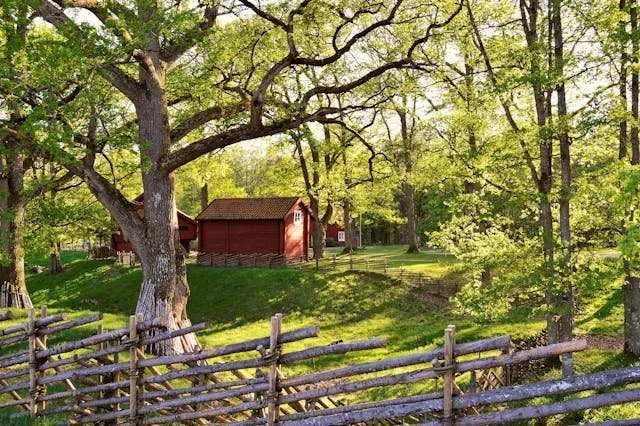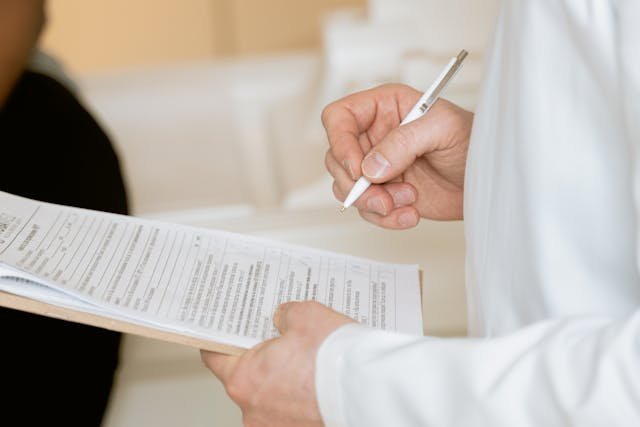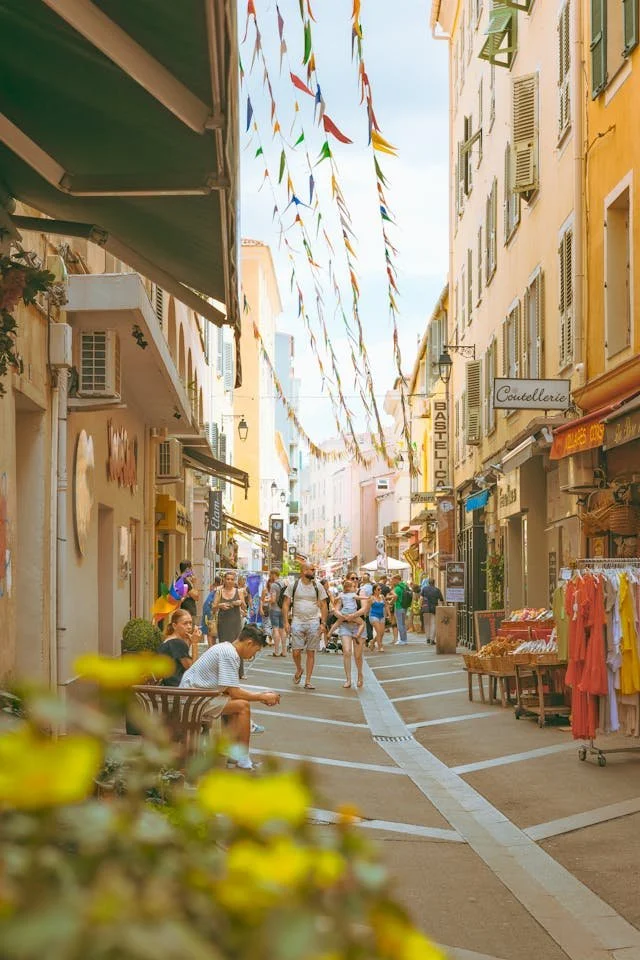What If Your Doctor Could Prescribe You a Trip to Sweden?
Imagine walking into your doctor’s office for another anxiety check-in and walking out with a prescription for travel.
Not pills. Not another meditation app. An actual prescription to visit Sweden - forest walks, cold water swims, sauna sessions in Lapland. It sounds like fantasy. But in Sweden, it’s becoming reality. And honestly? It has me rethinking everything I thought I knew about medicine.
When Countries Become Cures
Sweden just became the world’s first country doctors can officially prescribe. Through “The Swedish Prescription,” launched in 2024, patients anywhere can download a medical referral, bring it to their physician, and have travel written into their treatment plan.
This isn’t tourism marketing dressed as healthcare. It’s backed by Professor Yvonne Forsell from Sweden’s Karolinska Institute and medical professionals worldwide who are ready to prescribe nature when patients need it.
And Sweden isn’t alone in this revolution.
New Zealand pioneered green prescriptions in the late 1990s. Japan has offered “shinrin-yoku”—forest bathing—since 1982, with 62 certified therapy forests spanning 3,000 miles. Canada now has over 10,000 physicians prescribing passes to 80+ national parks. The UK invested nearly $6 million in green prescription pilots. Finland recommends five hours monthly in nature as your “minimum dose.”
The movement is global: South Korea, the United States, countries across Europe, all exploring how geography might be medicine.
Why This Resonates So Deeply With Me
I love to travel. I also run high on anxiety sometimes; easily made anxious by things most people don’t think twice about. The racing thoughts. The what-ifs. The way my nervous system treats uncertainty like danger.
But here’s what I’ve noticed: I feel different when I travel. Especially to Europe.
At times, I’ve even been half-jokingly (half-seriously) “prescribed” to move to Europe by people who’ve watched me transform there. I eat foods that wreck me at home like bread, dairy, and wine, with zero issues. My body just works differently. My mind settles. The constant low-grade inflammation I carry around? Gone.
I used to think it was psychological. Now I’m wondering if it’s environmental. The food quality. The walking culture. The pace. The access to nature. Something about those places lets my body remember what “well” feels like.
So when I read about Sweden literally prescribing travel, part of me thought: Finally. Someone gets it.
The Numbers Backing This Up
I’m someone who needs proof. So here it is: a massive 2023 study in The Lancet Planetary Health analyzed 92 studies and found nature prescriptions delivered measurable results. Reduced blood pressure. Significant drops in depression scores. Major decreases in anxiety—the thing I wrestle with most.
The research showed anxiety scores improved dramatically (effect size of -0.57). People took 900 more steps daily. Depression lifted. Hearts literally beat steadier.
Canadian researchers found adding just 10 trees to a city block improved people’s health as much as giving them $10,000 or making them seven years younger. Finnish scientists proved even 15 minutes in a city park boosts energy and vitality.
This isn’t woo-woo wellness culture. This is peer-reviewed evidence showing that place affects health at a cellular level.
Which makes me wonder: what if my food intolerances in the U.S. aren’t just about the food? What if they’re about stress, environmental toxins, the way American life keeps my nervous system in constant fight-or-flight? What if Europe works for me because my body finally gets to rest?
What Anxiety Has Taught Me About Geography
Nature prescriptions specifically interrupt anxiety’s neural pathways. They reduce cortisol. They give your nervous system permission to recalibrate.
When I’m navigating a European city or figuring out how to order coffee in broken Italian, my brain gets overwhelmed with new input—the good kind. I’m problem-solving in real-time. I’m capable. I’m adaptable. The world feels larger than my worry.
The science suggests this isn’t about escaping anxiety. It’s about building capacity to meet it differently.
And that food thing? Research shows chronic stress causes inflammation, which triggers food sensitivity. Maybe my body isn’t broken. Maybe it’s just exhausted from living in an environment that never lets it rest.
Travel—especially to places with better food quality, walkable cities, and nature access—might be treating the root cause, not just symptoms.
What If This Became Normal Medicine?
I keep thinking: what if more countries adopted this? What if my doctor could write “three weeks in Tuscany” the way they currently write “take with food”?
Right now, mental health costs the world $1 trillion annually. One in four of us will deal with mental illness. By 2030, that could hit $6 trillion.
Nature prescriptions offer something radical: low-cost, virtually no side effects, and they make you care more about protecting the environment. Researchers call it “planetary health”—taking care of ourselves by taking care of Earth.
But I’d be lying if I didn’t acknowledge the elephant in the room: not everyone can afford a trip to Sweden. Even Canada’s free park passes don’t cover transportation. This works great if you have means, but what about everyone else?
The most equitable version might be local, urban parks, community gardens, accessible blue spaces, as daily medicine. The big trips become bonuses, not requirements.
Though I’ll admit: knowing Europe makes me physically healthier makes the cost feel less like luxury and more like legitimate healthcare.
The Antidote to Everything Wrong with Right Now
You know what really sells me on this? The noise. The sensationalized news. The algorithm feeding us curated catastrophe 24/7.
When I travel, I’m not doomscrolling. I’m experiencing unmediated reality. My nervous system, which evolved for actual threats (not abstract ones delivered via notifications), finally gets a break.
Countries prescribing travel are prescribing relief from information overload. They’re betting physical presence in beautiful places beats digital despair.
They’re right.
Building My Own Medicine Cabinet
So here’s where I am: I can’t move to Europe tomorrow. I can’t even take a Swedish prescription to my doctor (yet—wouldn’t that be something?).
But I can build a practice around what I know works:
My maintenance dose: Regular local nature time. Morning walks. Weekend hikes. Lunch breaks outside. Finding the Europe-feeling in small moments—good bread from a bakery, walking instead of driving, slowing down.
My peak experiences: Actual travel when possible. Treating it less like vacation and more like medicine. Not Instagram moments—restoration.
This isn’t about perfection. It’s about giving my body more moments that feel like Europe. More spaces where my nervous system remembers what “safe” feels like.
What I’m Really Learning
Sweden isn’t prescribing escape. They’re prescribing reconnection—to nature, to ourselves, to basic human needs we’ve forgotten are needs.
My anxiety isn’t a character flaw. My food intolerances aren’t personal failures. They’re often rational responses to irrational conditions: constant stimulation, processed everything, nature deficit, disconnection.
Maybe I don’t need to manage symptoms better. Maybe I need different conditions. More moments when anxiety doesn’t make sense because I’m too present—watching light change over water, tasting real food, feeling my body move—to worry about tomorrow.
The research is clear. This works. The question is whether we’ll restructure healthcare, food systems, cities, and our lives to make this healing accessible to everyone.
The Bigger Picture (And Why It Matters)
If travel becomes medicine, everything shifts:
Less pharmaceutical dependence for mild-to-moderate mental health issues
Stronger environmental protections (prescribed places get protected)
Real conversations about who has access to green spaces and quality food
Healthcare that treats causes, not just symptoms
A different relationship with travel—less consumption, more restoration
For someone like me, who literally feels better in certain places, this could mean insurance covering trips. Medical tax deductions for travel. Doctors asking “where do you feel best?” instead of just “what hurts?”
It could mean my body’s wisdom—this place heals you—being validated by science instead of dismissed as vacation brain.
The Prescription I’m Writing Myself
I don’t have a Swedish prescription yet. But I’m writing my own:
Spend more time outside. Seek good food. Walk more. Travel when you can. Trust that your body knows what it needs. Notice where you feel well. Return there.
Not as luxury. As medicine.
Because sometimes the cure isn’t in a bottle. Sometimes healing looks like a forest path, a European street market, bread that doesn’t hurt, wine that doesn’t trigger, mornings when anxiety forgets to show up.
Sometimes the best prescription is the one that takes you far from the pharmacy and deep into what makes you feel alive.
And increasingly, doctors around the world are catching up to what travelers like us have always known:
Place is medicine. Geography is treatment. Sometimes, the cure is simply there instead of here.
Sweden is prescribing travel. I’m still in the U.S., managing anxiety and food intolerances the best I can. But knowing this exists—knowing science is finally validating what my body has been telling me all along—changes something. It makes hope feel less like fantasy and more like a roadmap.
Maybe one day, my doctor will ask: “Have you considered Sweden?” Until then, I’ll keep finding my medicine wherever I can.




